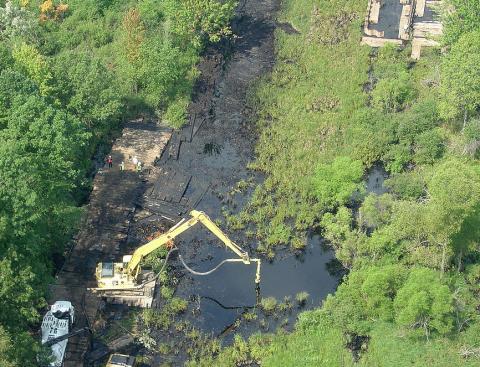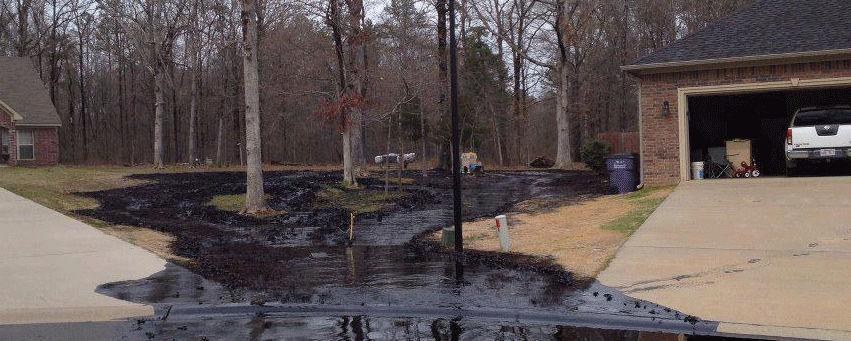Dilbit Sinks

Dilbit (aka diluted bitumen, aka tar sands oil) has some properties that make it different from conventional oil. When it spills onto rivers and lakes, some dilbit sinks to the bottom. This is an important difference because the cleanup methods that oil companies use when oil spills on a body of water are all geared toward the fact that oil floats on top of the water. Booms, skimmers and vacuums are used to clean oil off the water's surface. But dilbit is not oil. After a few hours of floating on the surface, the diluents begin to evaporate and dissolve into the air and water. The thick, sticky bitument left behind is heavier than water and ends up on the river bed where it is much harder to clean up.
That's what happened in Michigan. In 2010, an Enbridge pipeline spilled around a million gallons of dilbit onto the Kalamazoo River. Three years later Enbridge is still struggling to get all the dilbit cleaned from the bottom of the river. While this seems to have surprised the company, sinking is a long-known behavior of dilbit. The 2002 material safety data sheet (MSDS) for dilbit suggests that when it's spilled on water, a good cleanup strategy is to just wait and let the stuff sink to the bottom, because "product will submerge after a few days of weathering." This section has been removed from more recent versions of the MSDS, but the fact remains that the industry has known for years that dilbit sinks. A study released in 2013 confirms that dilbit sinks in water.
- Log in to post comments
